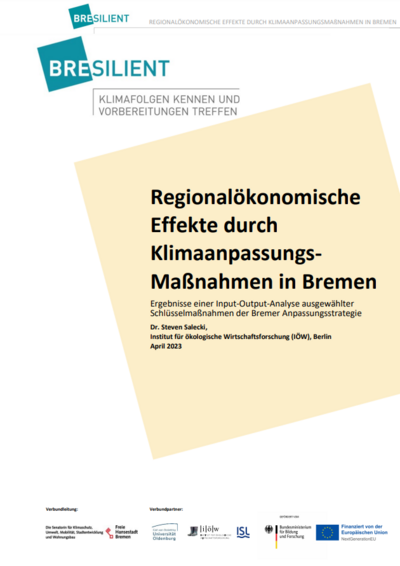Regional economic effects of climate adaption measures in Bremen Results of an input output analysis of selected key measures from Bremen’s climate adaption strategy
As large cities in a coastal region, the urban areas of Bremen and Bremerhaven are also affected by climate change. In order to meet these challenges, the state of Bremen has developed a climate adaptation strategy. Among other things, the BREsilient project has helped to specify and prioritize the measures it contains. In doing so, regional economic effects for selected key measures in the form of value creation and employment effects were determined based on a model. With a regionalized input-output analysis, value-added effects of EUR 2.3 million to EUR 4.7 million per year were calculated, depending on the scope of the implementation of the measures.
If roofs and open spaces are greened to a moderate extent, street trees are planted according to the current plans and surfaces in the street area are adapted to be sensitive to flooding when sewers are renovated, around 46 jobs will be created, which will result in around EUR 1.1 million in employee income. Companies could benefit from the implementation of these measures with profits of around EUR 1 million and the public sector could expect tax revenues of around EUR 125,000. In an ambitious scenario, the scope of implementation of the green measures would even double. The achievable annual added value and employment effects for Bremen and the economically intertwined surrounding area also increase accordingly.
Green measures for climate adaptation are often discussed primarily as a cost item. However, the results of the study make it clear that – in addition to their valuable ecosystem services – they can also trigger significant regional economic effects. The taxes collected could in turn flow into support programs for the implementation of further green measures.



